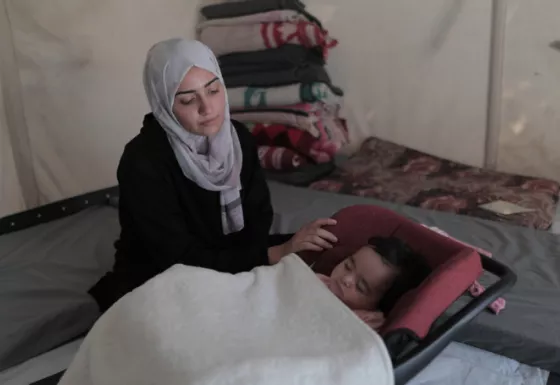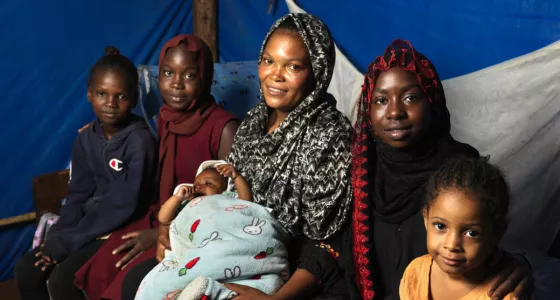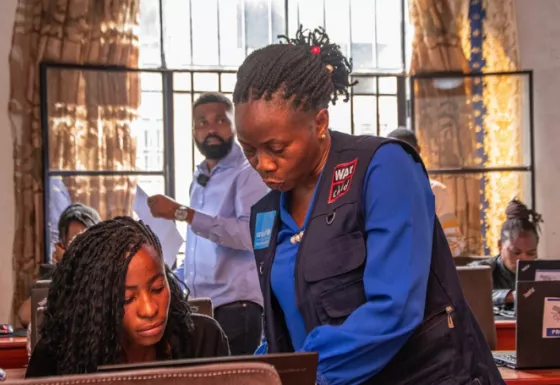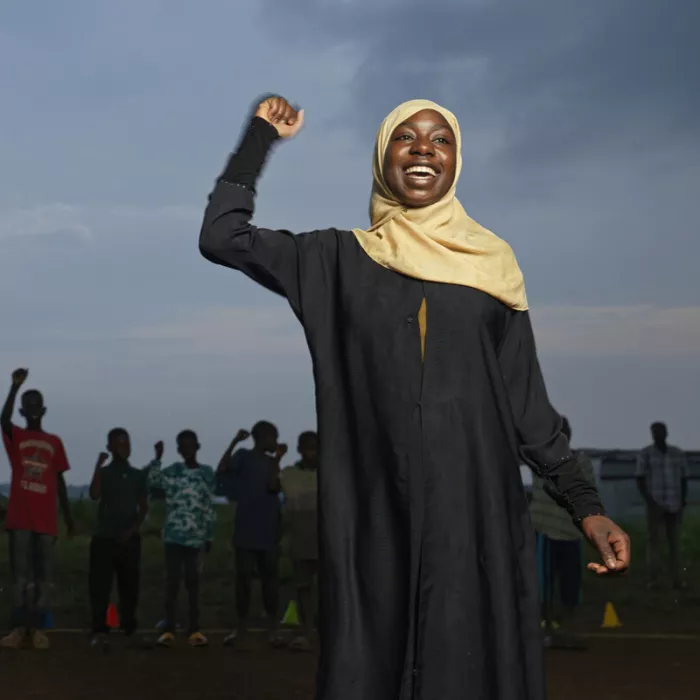“We had to walk, a lot, carrying our things. I was so anxious and worried about my baby. I was fearful of the white phosphorus and toxins exploding in the air. This is my first baby. I had anticipated welcoming her in peace and safety. I cried the whole way through.”
Her baby became sick in the cold, and Yasmin had no access to medicine, clothes, or even milk. For too many women, this is what it means to bring life into the world during war.
Right now, 612 million women and girls are living in conflict zones — a 50% increase compared to just 10 years ago.
They endure 95% of all sexual violence in conflict.
50% of women who die during pregnancy or childbirth worldwide are in a conflict areas.
Girls are 2.5 times more likely than boys to be out of school.
Without hygiene supplies and clean spaces, women and girls face serious health risks and suffer a daily loss of dignity.
In Uganda last year, War Child met three sisters from the DRC, orphaned, alone, and left to survive on a hillside with nothing but a tarp and sticks for shelter. Within days, the tarp was stolen, the eldest was sexually assaulted, and the younger two had no access to school or even clean water. By the time War Child met them, they had endured this for a year.
War Child acted immediately. The girls received medical care, and the process began to rehome them in a safe community, with access to school and ongoing support.




